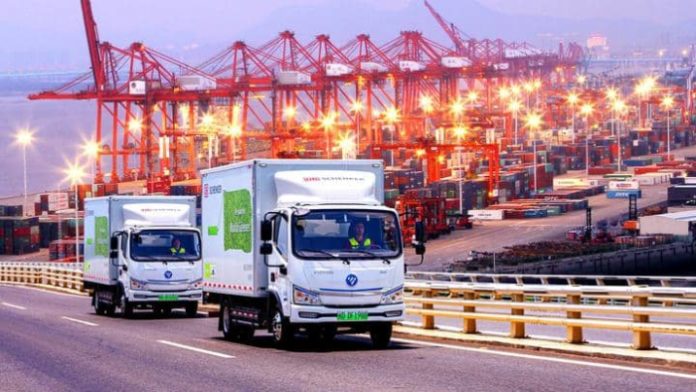
-
Chaos in global supply chains caused by COVID-19 and the Ukraine war on Europe-Asia transport is likely to drive an industry reconfiguration through 2030
-
Logistics and supply chain expert says industry should take this as an opportunity to re-evaluate their sourcing and production with a more regional approach
-
Mark Millar says Asian sourcing and production will stay strong despite companies nearshoring and reshoring, as he rules out a manufacturing mass exodus
Global supply chains are expected to go through a reconfiguration that may last until the end of the decade amid the disruptions caused by the COVID-19 pandemic and the Ukraine crisis on Europe-Asia transportation, an industry expert says.
Mark Millar, an industry expert in logistics and supply chain strategies, said industry players should use the chaotic situation as an opportunity to re-evaluate their sourcing and production with a more regional approach.
He said he expects the reshaping of the global supply chain industry to last through 2025 to 2030, with some businesses nearshoring and reshoring.
Millar, a keynote speaker and author of the book Global Supply Chain Ecosystems, will keynote a webinar, “From Long Chains to Short Chains: Reforming Global Supply Chains in the Post-Pandemic Era” to be hosted by DIGITIMES Asia on August 25.
Much of the world is still experiencing vast supply chain chaos, while some regions are recovering, Millar said. The more globalized supply chains are, the more prevalent the disruption gets. But the challenges companies face today differ from two years ago, especially with the ongoing Ukraine conflict, which he described as a “black swan” event.
In 2021, an additional 1 million containers traveled by rail from the East, mainly China, to Western Europe due to significant congestion in the sea freight shipping sector, he said. Most of those routes are via Russia and not available now. So, freight forwarders and logistics firms must find space for the containers on ships that are already full to capacity.
On a broader basis, the Europe crisis has hit oil and gas supplies, lifting energy prices. This has had a knock-on effect on global transport networks serving supply chains, Millar said.
What can firms do to tackle challenges? He said collaboration among supply chain partners is the practical way to ride the crisis in the short to mid-term. This includes finding alternative sources or transport routes that may be more expensive but can deliver the goods to the final destination.
On a medium-term basis, he said the disruption has opened an opportunity for re-evaluation after 30 years of globalization. For instance, companies might want to take a more regional approach in the future that would build more resilience into their supply chains and reduce emissions.
In fact, businesses have started reconfiguring their supply chains. Millar said some companies are looking at or implementing nearshoring, moving sourcing and production closer to the final destination market. Others are considering moving sourcing and production back into the final destination, or reshoring, also known as on-shoring.
“We’ll see a movement towards a more regional approach to supply chains,” he said. In the European scenario, Poland, Turkey and some North African countries with low-cost labor and close to Europe would come into play as potential nearshoring sites, he said.
With the nearshoring and reshoring coming, there have been questions on whether reconfiguring supply chains would affect Asia’s, especially China’s, role as a manufacturing powerhouse.
Millar said for multiple reasons, there will be no mass exodus: only a proportion of production will be moved out of China or Asia. For example, some of the supply chains are so complex and fine-tuned that relocating them would be prohibitively expensive and risky.
Most of the consumer growth will still originate in Asia until at least 2030, the increase almost making up for what would exit Asia for nearshoring, he said. Therefore, production and sourcing for supply chains in Asia will stay strong to serve the region.
China has taken the dual circulation strategy to foster greater self-reliance for its economy. The policy will provide extra impetus to boost production within China.
He said the real movement of reconfiguring global supply chains will become evident from 2025 to 2030. Besides nearshoring and reshoring, firms would concentrate supply chains in China for products they sell locally – “in China for China”. Diversification around Asia would lead to a China-plus strategy, creating supply chains built in Asia for Asia.
Some top executives of major listed firms are now involved in strategic decisions of supply chains, Millar said. Many executive boardroom discussions on future supply chain directions will be ongoing. The results will gradually unfold in five to 10 years.
“The global supply chain landscape in 2030 will be pretty different from what we’ve been used to for the last decade or so,” Millar added.




